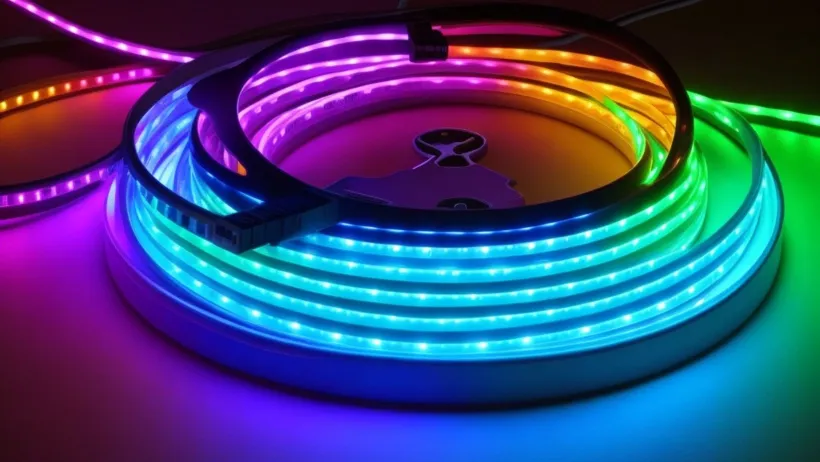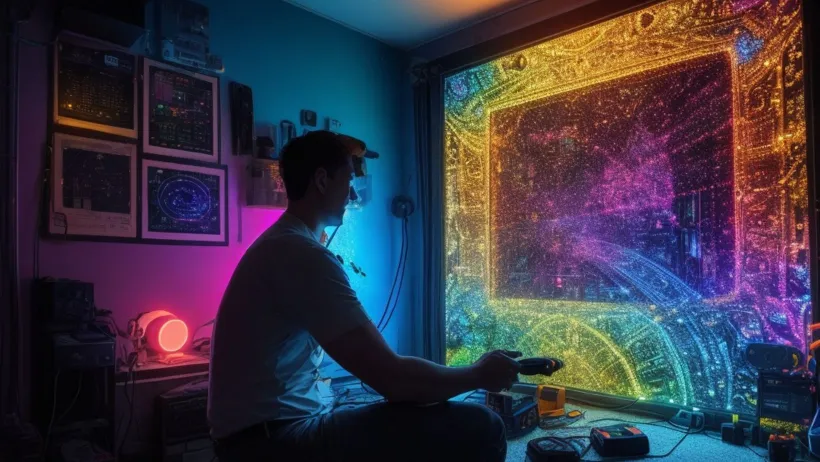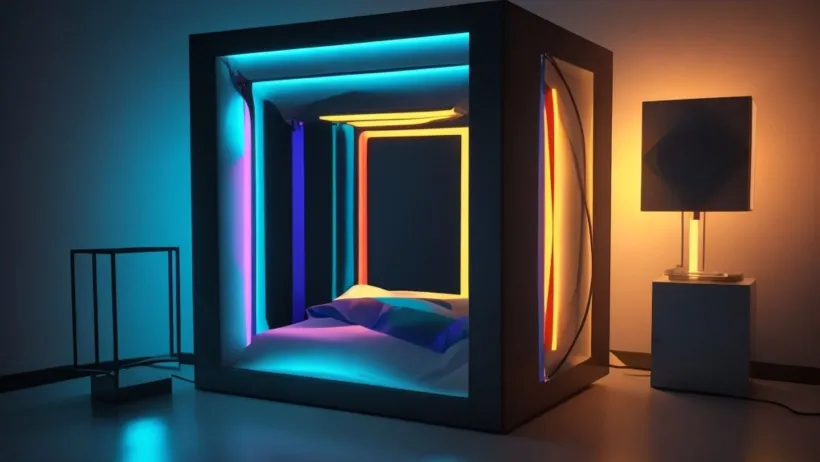Hey there! So you’re curious about how to wire RGB LED strip without controller? No worries, it’s totally doable and can add a cool touch to your setup. While it might not offer super fancy effects, you can still get some sweet colors going. Check out these six friendly methods:
6 Best Ways How to Wire RGB LED Strip Without Controller

1. Use an Arduino Microcontroller:
Alright, so the easiest way to get this done is by teaming up with an Arduino microcontroller. You’ll be hooking up those three wires (positive, ground, and negative) straight to your microcontroller for some basic color control.
2. Bring in an External Power Supply:
If you’ve got an external power supply with the right voltage output, you’re in business. This allows you to power up the RGB LED strips individually without the need for a controller.
3. Get Acquainted with an N-Channel MOSFET:
The N-Channel MOSFET is your pal for controlling the flow of current to your lights, and it plays well with resistors. This nifty component helps you dial in the intensity of each color in your LED strip.
4. Embrace a Power Distribution Board:
Want to simplify things? A power distribution board comes to the rescue. It splits up the continuous voltage from your power source into the three different colors, making it a breeze to connect each one up to the same voltage and ground.
5. Add Current Limiting Resistors:
Current limiting resistors are your ticket to wiring up RGB LED strips without a controller. They ensure the LEDs get just the right amount of current, keeping them shining bright and balanced.
6. Tap into Battery Packs or Other Power Sources:
No external power supply? No problem. Grab some battery packs or alternative power sources for each color. This gives you a portable option for lighting setups that can work in a pinch.
Just a heads-up, these methods might not give you the same level of fancy effects and customization as a dedicated RGB controller. Remember, always double-check your wiring and connections to make sure everything’s safe and sound.
Do you need a controller for LED lights?

So, in the world of spicing up your space with vibrant LED lights, the real MVP is the LED controller! It’s like the wizard behind the curtain, giving you the power to fine-tune your lighting game. We’re talking brightness, color swaps, temperature tweaks, and even setting up a sweet timer – it’s all in the controller’s bag of tricks.
No Controller, No Problem!
Alright, say you don’t have a controller on hand. No biggie! There are still some slick ways to call the shots:
1. Smartphone Apps
Picture this – your phone turns into a magic wand for your lights! With nifty apps, you can have your lighting system dancing to your tune in no time.
2. Voice Commands with Smart Speakers or Home Automation Systems
Ready to feel like Tony Stark? With smart speakers and home automation, just say the word and watch your space transform. Your voice becomes the ultimate remote control.
3. Wall-Mounted Controllers:
Want to keep it old-school cool? Wall-mounted controllers are your go-to. They’re like your trusty sidekick, always ready for a quick lighting change.
4. Wireless Switches:
Let’s go wireless! These switches make turning on/off and adjusting your lights a breeze. No more fumbling around – just seamless control.
5. Power Switch:
Sometimes, keeping it simple is the way to go. A good ol’ power switch lets you take charge with a flick, keeping things easy and straightforward.
White Light Mode, Anyone? If you’re all about that classic white light vibe, no worries. You can set up the wiring to keep things steady and neutral, giving you that timeless glow.
Read More: 12 Easy Ways How to Keep LED Light Strips from Falling Off
Read More: How to connect your LED lights to your phone in Just 4 Steps
What are the different types of controllers for RGB LED strips?

When it comes to RGB LED strips, there’s a whole bunch of controllers out there, each with its own bag of tricks. Let’s take a stroll through some of the most common ones:
Wired LED Controllers:
These are like the hands-on crew. They sit between the LED driver and your strip lights. To switch up the light show, you’ve got to get up close and personal with the controller.
Wireless LED Controllers:
These guys play a cool game of pass-the-message. A remote sender talks to a receiver, which then gives the orders to the LED strip. Brightness, dance routines – you name it, they handle it. And within wireless, we’ve got a few players:
- WiFi LED Controller: It’s like the big brother of the wireless bunch. It uses Wi-Fi signals to link up senders like remotes or phones to the controller. Just remember, it needs a network to strut its stuff.
- RF LED Controller: This one’s all about radio waves. It uses them to connect senders and receivers, even sneaking through walls. Consider it the medium-range champ.
- Bluetooth LED Controller: Think of it as the tech-savvy buddy. It buddies up the sender and controller through good ol’ Bluetooth. No network needed, so it can rock where Wi-Fi fears to tread.
- IR LED Controller: In this game, it’s all about infrared rays. They’re the secret sauce linking the sender and the controller.
Programmable LED Controllers:
These are the creative ones. They let you cook up your own light recipes using software or apps on your computer or phone.
DMX LED Controllers:
These guys speak a digital language called DMX. With them, you can play maestro to multiple RGB LED strips, all dancing in sync.
DALI RGB Controllers:
Here’s another digital language, DALI. These controllers let you lead a synchronized dance with multiple RGB LED strips using DALI signals.
Smart Home Controllers:
These are the brainiacs of the bunch, like Amazon Alexa or Google Home. They take orders through voice or apps, making your RGB LED strips sing and dance on command.
And there you have it! These are just some of the popular controllers for RGB LED strips. Picking the right one? Well, that’s all about what floats your boat!
Read More: 17 Best ways to achieve baddie aesthetic room with led lights
What is an RGB LED strip?

RGB LED strips! These nifty lighting buddies are like a string of colorful pearls, with multiple light-emitting diodes (LEDs) all lined up in a row. They work magic by mixing the primary colors: red, green, and blue.
Picture this: the basic version has three separate LEDs, each shining in one of those primary colors, all tucked under a clear cover. By playing around with how strong each color shines, you can create a whole rainbow of different shades.
Where They Shine Bright: RGB LED strips are like the artists of lighting, especially when it comes to sprucing up spaces. Whether it’s at home, in the office, or a swanky commercial joint², they know how to add that extra pop. You can stick them on walls, ceilings, or any surface you fancy, and watch as the space comes alive with vibrant, ever-changing light.
The Controller’s the Boss: Now, here’s the fun part. The color show and effects you get depend on the type of controller you’re rocking. It’s like having different playlists for different moods!
Your Show, Your Way: These lighting champs are all about giving you the reins. You can tweak the colors, dial up or down the brightness, and even pick out specific patterns. It’s like having your own mini light show at your fingertips. And guess what? Some of these RGB LED strips go the extra mile with features like color-changing modes, remote control, and even getting cozy with smart home setups.
Read More: RGB Strip Lights: What They Are and How They Are Used.
Read More: Difference Between RGB, RGBW, and RGB-CCT LED Strips – Potato Lighting
Conclusion
To wire a RGB LED strip without a controller, use an Arduino microcontroller for basic color control. An external power supply with the right voltage output can power up the strips individually. An N-Channel MOSFET controls current flow and helps adjust the intensity of each color. A power distribution board simplifies connecting strips to the same voltage and ground. Add current limiting resistors to ensure the LEDs get the right amount of current. If no external power supply is available, use battery packs or other power sources.
FAQ- How to Wire RGB LED Strip Without Controller
What do I need to wire RGB LED strip without a controller?
To wire RGB LED strip without a controller, you will need the following:
RGB LED strip
Power supply
Connecting wires (optional)
Soldering iron (optional)
How do I identify the different wires on an RGB LED strip?
Most RGB LED strips have four wires: red, green, blue, and common (positive). The common wire is usually white or black, and the other three wires are typically red, green, and blue.
Which wire do I connect to the power supply?
Connect the common wire on the RGB LED strip to the positive terminal of the power supply.
How do I control the colors of the RGB LED strip without a controller?
To control the colors of the RGB LED strip without a controller, you will need to connect each color wire to a separate power source. For example, you could connect the red wire to a 5V battery, the green wire to a 3.3V battery, and the blue wire to a 12V battery. This will allow you to control the brightness of each color individually.
Can I use a dimmer switch to control the brightness of the RGB LED strip without a controller?
Yes, you can use a dimmer switch to control the brightness of the RGB LED strip without a controller. However, you will need to make sure that the dimmer switch is compatible with the type of LED strip that you are using.
Is it safe to wire RGB LED strip without a controller?
A: Yes, it is safe to wire RGB LED strip without a controller, as long as you follow the safety precautions below:
1. Make sure that the power supply is rated for the voltage and current requirements of the RGB LED strip.
2. Use proper wiring techniques and insulation to prevent short circuits.
3. Do not overload the power supply.










